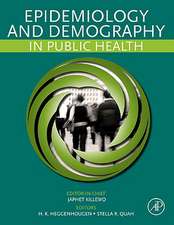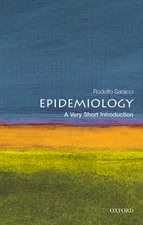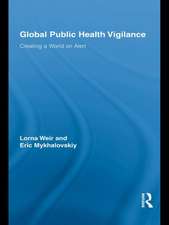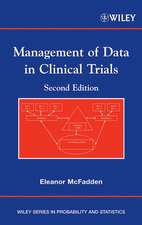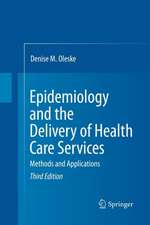Risk Assessment Methods: Approaches for Assessing Health and Environmental Risks
Autor V.T. Covello, M.W. Merkhoheren Limba Engleză Hardback – 30 dec 1993
| Toate formatele și edițiile | Preț | Express |
|---|---|---|
| Paperback (1) | 946.41 lei 6-8 săpt. | |
| Springer Us – 21 mai 2013 | 946.41 lei 6-8 săpt. | |
| Hardback (1) | 954.14 lei 6-8 săpt. | |
| Springer Us – 30 dec 1993 | 954.14 lei 6-8 săpt. |
Preț: 954.14 lei
Preț vechi: 1163.58 lei
-18% Nou
Puncte Express: 1431
Preț estimativ în valută:
182.59€ • 189.55$ • 152.26£
182.59€ • 189.55$ • 152.26£
Carte tipărită la comandă
Livrare economică 22 martie-05 aprilie
Preluare comenzi: 021 569.72.76
Specificații
ISBN-13: 9780306443824
ISBN-10: 0306443821
Pagini: 318
Ilustrații: XIV, 318 p.
Dimensiuni: 152 x 229 x 25 mm
Greutate: 0.69 kg
Ediția:1993
Editura: Springer Us
Colecția Springer
Locul publicării:New York, NY, United States
ISBN-10: 0306443821
Pagini: 318
Ilustrații: XIV, 318 p.
Dimensiuni: 152 x 229 x 25 mm
Greutate: 0.69 kg
Ediția:1993
Editura: Springer Us
Colecția Springer
Locul publicării:New York, NY, United States
Public țintă
ResearchDescriere
Much has already been written about risk assessment. Epidemiologists write books on how risk assessment is used to explore the factors that influence the distribution of disease in populations of people. Toxicologists write books on how risk assess ment involves exposing animals to risk agents and concluding from the results what risks people might experience if similarly exposed. Engineers write books on how risk assessment is utilized to estimate the risks of constructing a new facility such as a nuclear power plant. Statisticians write books on how risk assessment may be used to analyze mortality or accident data to determine risks. There are already many books on risk assessment-the trouble is that they all seem to be about different sUbjects! This book takes another approach. It brings together all the methods for assessing risk into a common framework, thus demonstrating how the various methods relate to one another. This produces four important benefits: • First, it provides a comprehensive reference for risk assessment. This one source offers readers concise explanations of the many methods currently available for describing and quantifying diverse types of risks. • Second, it consistently evaluates and compares available risk assessment methods and identifies their specific strengths and limitations. Understand ing the limitations of risk assessment methods is important. The field is still in its infancy, and the problems with available methods are disappoint ingly numerous. At the same time, risk assessment is being used.
Cuprins
Introduction to Risk Assessment. Release Assessment. Exposure Assessment. Consequence Assessment. Risk Estimation. An Evaluation of the State of the Art. Index.

